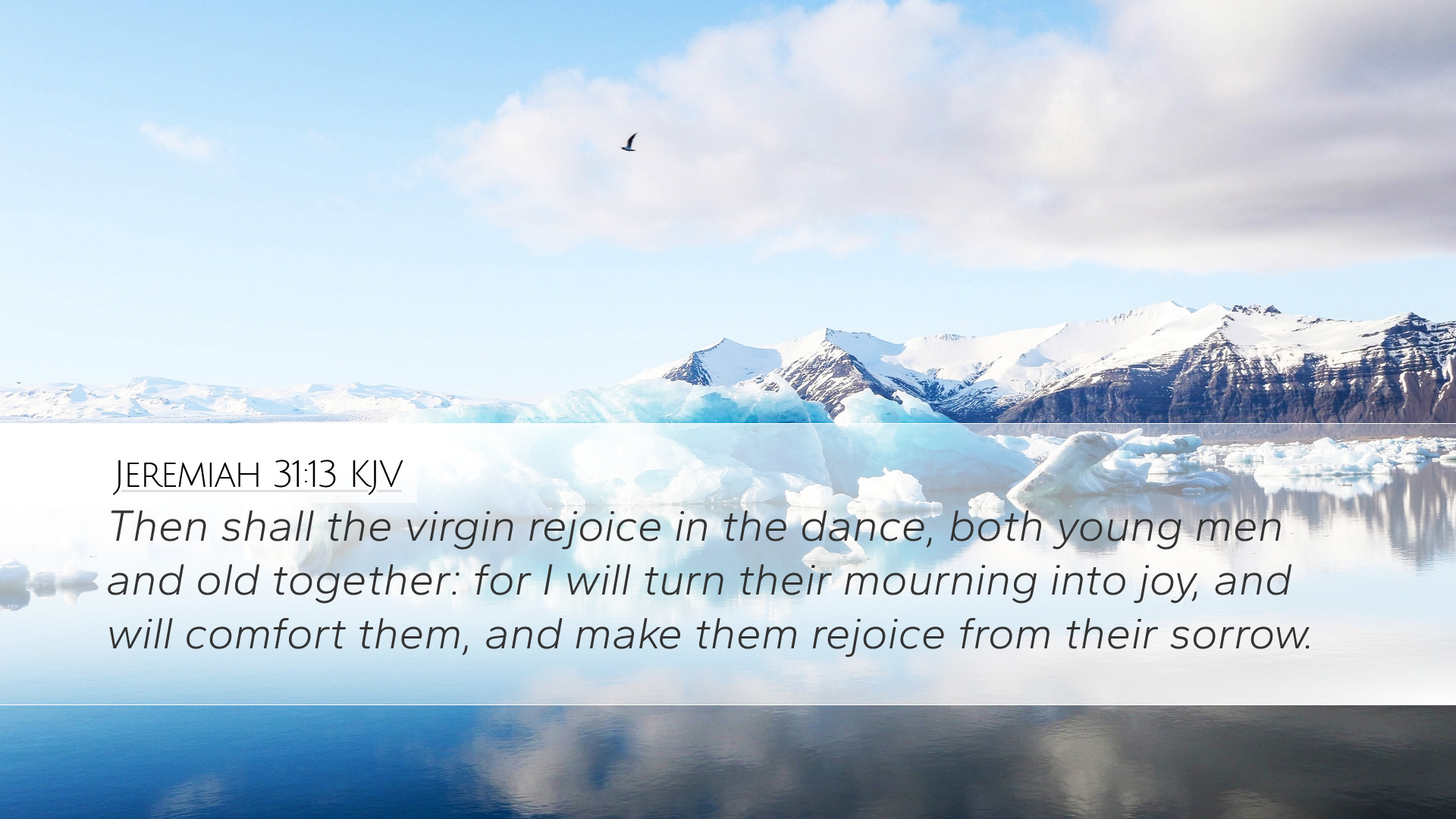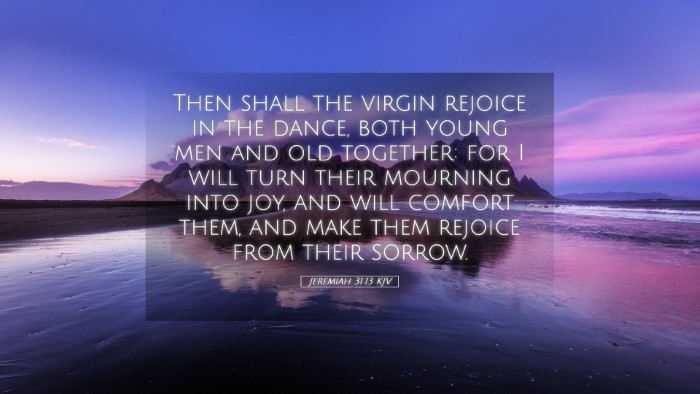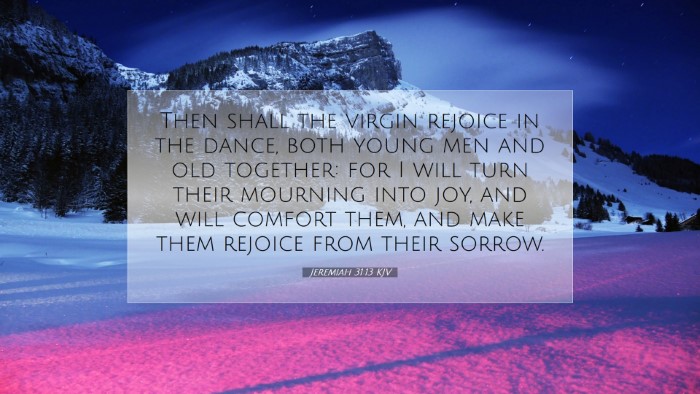Commentary on Jeremiah 31:13
Jeremiah 31:13 states: "Then shall the virgin rejoice in the dance, both young men and old together: for I will turn their mourning into joy, and will comfort them, and make them rejoice from their sorrow." This verse encapsulates significant themes of restoration, joy, and divine comfort, which can be pivotal for understanding the broader context of Jeremiah's prophecies.
Context and Background
The book of Jeremiah is deeply rooted in the context of Israel's calamity, indicating God’s judgment for their disobedience and their impending exile. In this chapter, however, we witness a pivotal moment of transition from despair to hope. Jeremiah 31 is often seen as a chapter of consolation and solace in the midst of suffering.
Insights from Public Domain Commentaries
Matthew Henry's Commentary
Matthew Henry emphasizes that this verse signifies a celebration and reversal of Israel's fortunes. He notes that the "virgin" symbolizes purity and joy, highlighting that even in their mourning, a time of unrestrained joy is anticipated. Henry indicates that this joy is not merely superficial but a divine transformation in the hearts of the people. God promises to convert their mourning into rejoicing, showcasing His sovereign power to redeem and restore.
- Divine Intervention: Henry points out that it is God’s will and act to bring about joy—suggesting that human efforts alone cannot achieve such transformation.
- Restoration of Relationships: The mention of both "young men and old together" indicates a restoration in communal relationships, which had been fractured by sin and sorrow. This speaks to the inclusivity of God's promise across generations.
Albert Barnes' Notes on the Bible
Albert Barnes provides a detailed examination of the themes of mourning and joy. He asserts that mourning serves a purpose—it leads to genuine repentance, but the ultimate goal is to transition to joy. Barnes articulates that when God speaks of turning mourning into joy, it reflects a divine guarantee of change and comfort.
- The Role of Dance: The act of dancing signifies personal and communal celebration, an expression of joy that arises in response to God's restorative actions.
- Universal Application: Barnes emphasizes the verse's broader implications, suggesting that God's promise extends beyond Israel to all humanity, signifying a universal message of hope.
Adam Clarke's Commentary
Adam Clarke draws attention to the future fulfillment of this verse, connecting it with the coming of Christ and the New Covenant. Clarke interprets the laughter and joy as indicative of the messianic age, where sorrows are replaced by eternal joy. He suggests that these prophetic words hint at a time when sins are forgiven and relationships with God are restored.
- The Nature of Joy: Clarke notes that the joy mentioned is not just emotional but rooted in the restoration of spiritual standing before God.
- Contrast with Mourning: Clarke also highlights the stark contrast between mourning—an emotional response to sin and separation from God—and the joy that comes from reconciliation and acceptance.
Theological Implications
Jeremiah 31:13 provides rich theological insights relevant for pastors, students, and scholars alike:
- God's Sovereignty in Restoration: This passage emphasizes God’s control over human circumstances. It reassures believers that despite current sufferings or sorrows, God has the ultimate authority to restore joy.
- The Nature of True Repentance: The transition from mourning to joy can only occur through genuine repentance, reinforcing the need for a heartfelt return to God.
- The Community Aspect of Worship: The collective mention of young and old celebrating together suggests the importance of community in experiencing God's joy.
Conclusion
In conclusion, Jeremiah 31:13 serves as a powerful reminder of hope and joy derived from God's promises. The insights from Matthew Henry, Albert Barnes, and Adam Clarke converge to inform us of the profound significance of God's capacity to transform mourning into joy. As pastors, theologians, and students engage with this text, they are called to reflect on the richness of divine grace and the communal dimensions of worship that God invites His people into.


